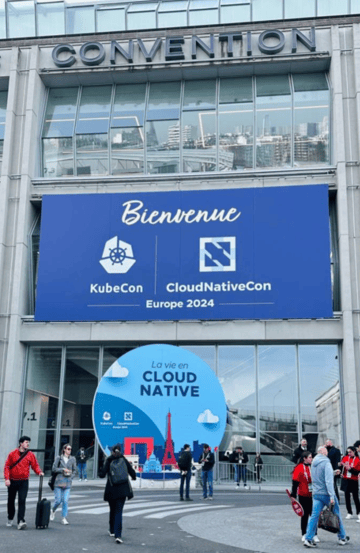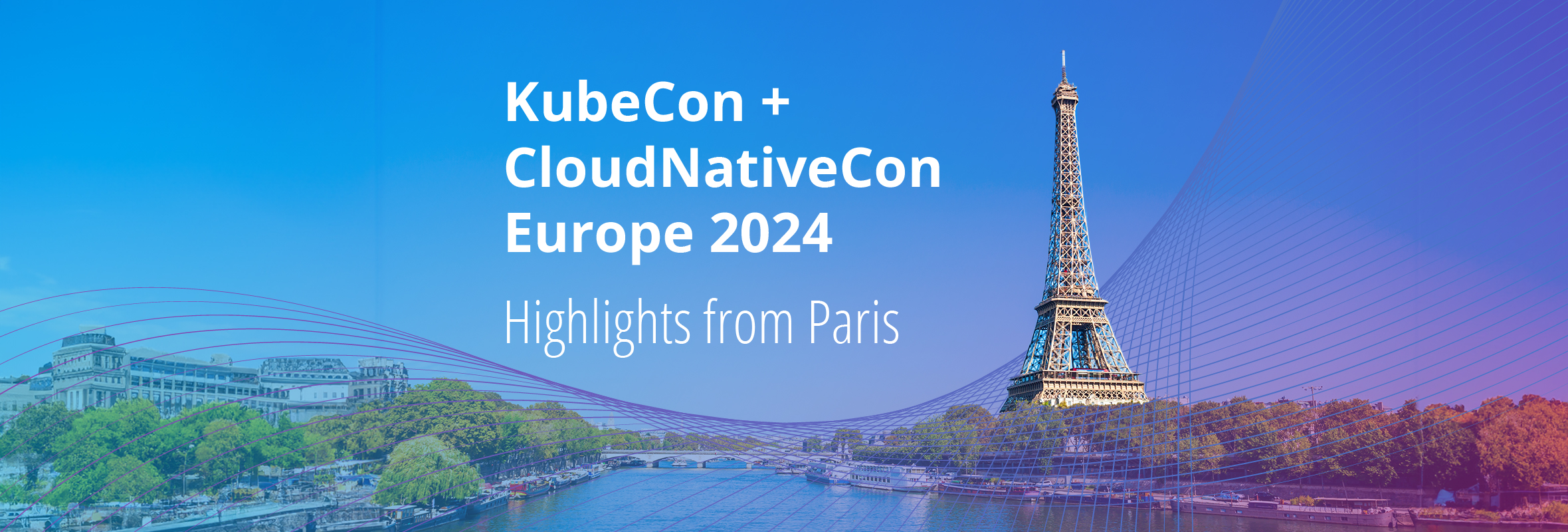Introduction
I recently had the privilege of attending KubeCon + CloudNativeCon Europe 2024 in Paris. The conference, hosted by the Linux Foundation, marked the 10th anniversary of Kubernetes. Here are the key takeaways and highlights from the conference.
Key Takeaways
AI/ML
Large language models (LLMs) and Generative AI were front and center at the event, with discussions on challenges around security, managing data, and energy consumption. This was a popular quote I heard:
“If inference is the new web application, Kubernetes is the new web server”
Cloud-native platforms provide several benefits for AI, including the ability to package models and dependencies into Docker containers and enhance resource management to ensure AI models run effectively. The community is actively investigating how to manage AI workloads more efficiently. Accelerating data loading and preprocessing is achievable by connecting CPUs to GPU clusters and selecting the most suitable computing resources for specific AI models, thereby facilitating quicker iterations.
The conclusion is that Kubernetes is well-suited to running massive AI workloads. Another similar quote that I heard:
“AI will power our next industrial revolution with Kubernetes as the platform.”
Platform Engineering
Platform engineering was emphasized in many talks. There’s a significant focus on platform engineering to simplify and enhance the speed of code delivery. Due to microservices and the sheer number of tools being used, developer productivity has slowed down, and the conversation is shifting towards standardization and the development of a shared language within the community.
Some notable points here:
- Kubernetes and cloud-native technologies are changing the infrastructure management landscape, making it more automated, scalable, and resilient.
- Internal developer platforms (IDPs) are becoming more ubiquitous. They provide developers with a self-service portal to access infrastructure resources, CI/CD pipelines, and observability tools. The debate here was primarily around how opinionated an IDP should be. Should an IDP be instilling best practices into their product or let the customer customize their IDP to their liking? The goal is to balance rapid deployment and immediate value with flexibility.
- AI was mentioned everywhere but the key takeaway was that platform engineering best practices will be required to be successful with it.
Observability
Most observability vendors are adding LLMs to their solutions to give them natural language chat interfaces. The differentiator is using AI models to implement intelligent observability agents that work on the root cause of issues from the large datasets they handle and remediating them in some cases. Check out this company.
An interesting tool that was emphasized was the K8s GPT.
Apart from knowledge sessions about implementing OpenTelemetry, observability system scaling was a hot topic at the conference and has gained a lot of traction in the last few years. Scaling observability systems has become a problem for big companies and startups alike, which need to process massive amounts of data.
Apple also discussed intelligent observability, highlighting several critical insights:
- It's essential to incorporate observability into the AI model training phase to gather data on training durations, precision, and resource usage. This information is vital for future optimizations.
- Additionally, observability should be applied to inference pipelines — the procedure through which AI models process queries and produce responses. Monitoring tools can track various metrics, including latency, accuracy, and resource utilization.
- Currently, a standardized framework for collecting and measuring data for AI models does not exist, indicating a pressing need for standardization in this area.

Photo by Jayanth Putta
Sustainability
Sustainability was a subtle undertone throughout the conference, since this is particularly relevant in the wake of AI's exponential growth. This surge in AI workloads creates a huge demand for cloud resources and leads to tradeoffs between achieving faster business value and maintaining operational/energy efficiency. There were talks on ways to optimize AI workloads on Kubernetes for better cost of ownership, performance, and sustainability. The idea here is that Kubernetes has inherent green qualities due to its fine-grained scalability, and some talks centered around urging developers to use these features.
Conclusion
I highly recommend attending KubeCon + CloudNativeCon. It offers invaluable opportunities for professionals, particularly in the cloud-native space. Anyone who attends:
- Gains firsthand insights into emerging trends
- Gets to engage with thought leaders
- Experiences new products and solutions that are defining the future of open-source and cloud computing.
- Network with peers across the industry
With so many sessions, workshops, and networking opportunities, it’s time well spent. KubeCon + CloudNativeCon happens in multiple places every year with the next one in North America set for November 12-15 in Salt Lake City, Utah!
Next Steps:
- Read the blog: Close the Visibility Gap for Modern Cloud-Native Services with OpsRamp’s Kubernetes Monitoring
- Read OpsRamp’s Executive Guide to Kubernetes
- Read the blog: De-mystifying Cloud and Cloud-Native Observability
- Read the blog: Cloud Discovery in a Hybrid and Multi-Cloud World
- Follow OpsRamp on Twitter and LinkedIn for real-time updates and news from the world of IT operations.
- Schedule a custom demo with an OpsRamp solution expert.



